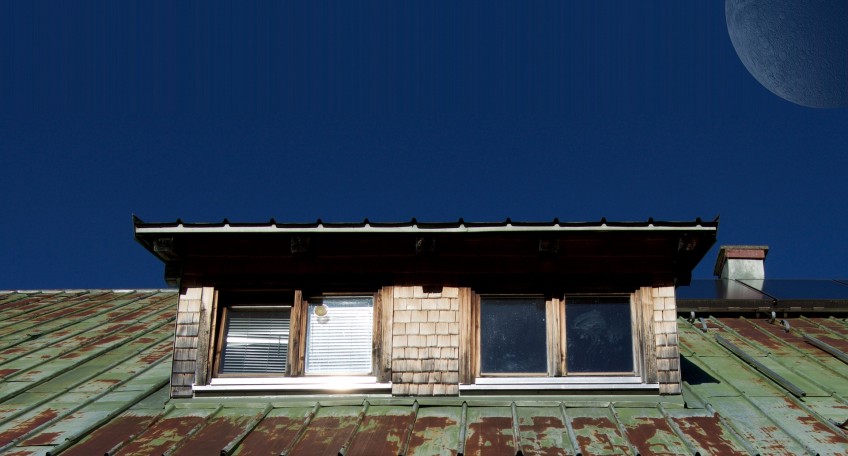Read this How To Install Metal Roofing On A Flat Roof article to find useful information for you, all summarized well by us.

Metal Roofing for Flat Roofs: A Comprehensive Guide to DIY Installation
As a homeowner who’s long wrestled with a leaky flat roof, the day I finally decided to tackle the issue head-on was nothing short of daunting. But with thorough research and a can-do attitude, I embarked on a mission to transform my problematic roof into a durable, weather-resistant shelter. Here’s the comprehensive guide I wish I’d had to help me navigate the process of installing metal roofing on a flat roof.
Preparing a Flat Roof for Metal Roofing
Before embarking on the installation, it’s crucial to ensure your flat roof is adequately prepared. This involves:
- Creating a slope: Flat roofs require a slight slope to facilitate water drainage. You can achieve this by constructing a tapered base layer of insulation or by installing a pre-sloped roof system.
- Installing a vapor barrier: A vapor barrier is an essential layer that prevents moisture from rising into the roof system and causing condensation. Apply a vapor barrier to the roof deck before installing any other materials.
- Installing underlayment: The underlayment protects the metal roofing from moisture and provides additional insulation. Lay down the underlayment over the vapor barrier, ensuring it overlaps by at least 6 inches.
Installing Metal Panels on a Flat Roof
With the roof prepared, you can begin installing the metal roofing panels. Follow these steps for a secure and durable installation:
- Lay out the panels: Start by laying out the metal panels in the desired pattern, leaving a 1-inch overlap between each panel.
- Fasten the panels: Secure the panels to the roof deck using roofing screws. Drive screws through the panels into the roof deck, spacing them about 12 inches apart.
- Seal the seams: To prevent water from entering the roof system, seal the joints between the panels using a high-quality sealant. Apply the sealant to the seams and smooth it out using a trowel.
- Install flashing: Flashing is essential for sealing around roof penetrations such as chimneys, vents, and skylights. Cut the flashing to size and install it around the penetrations, ensuring it overlaps the metal roofing panels.
- Attach trim: Trim the edges of the roof using a metal roof trim. This trim protects the edges of the panels from moisture and adds a finished look to the roof.
Tips and Expert Advice
- Use corrosion-resistant screws: To prevent rust and maintain the integrity of your metal roof, use corrosion-resistant screws made specifically for metal roofing applications.
- Inspect your roof regularly: Regular roof inspections are crucial to identify and address any issues before they become major problems. Look for signs of leaks, rust, or damage.
- Clean your roof: Moss and debris can accumulate on metal roofs, hindering drainage and reducing their lifespan. Clean your roof regularly with a soft brush and a mild detergent.
- Avoid abrasive cleaners: Abrasive cleaners can damage the finish of your metal roof. Use only mild detergents and avoid using pressure washers, which can force water beneath the panels.
- Consult a professional roofer: If you have any doubts about your ability to install metal roofing properly, consult a professional roofer to ensure a safe and durable installation.
Frequently Asked Questions
Q: How long does a metal roof last on a flat roof?
A: Metal roofs have a lifespan of 40-70 years or more, making them an excellent investment for your home.
Q: Can I install metal roofing over an existing roof?
A: Yes, you can install metal roofing over an existing roof, provided the roof is in good condition and can support the weight of the metal roofing.
Q: What type of metal is best for flat roofs?
A: Aluminum and steel are popular choices for metal roofs on flat roofs. Aluminum is lightweight and corrosion-resistant, while steel is stronger and more durable.
Q: How much does it cost to install metal roofing on a flat roof?
A: The cost of metal roofing for a flat roof varies depending on the size of the roof, the type of metal used, and the complexity of the installation. On average, you can expect to pay between $7 and $15 per square foot.
Conclusion
Installing metal roofing on a flat roof can be a challenging but rewarding DIY project. By following these steps and incorporating the provided tips and advice, you can confidently achieve a durable, weather-resistant roof that enhances the beauty and value of your home.
If you’re passionate about home improvement and looking to learn more about metal roofing, I invite you to join me in exploring my other articles and videos on the topic. Together, we can make informed decisions about our homes and create living spaces we love.

Image: www.pinterest.com
Thank you for visiting our website and taking the time to read How To Install Metal Roofing On A Flat Roof. We hope you find benefits from this article.